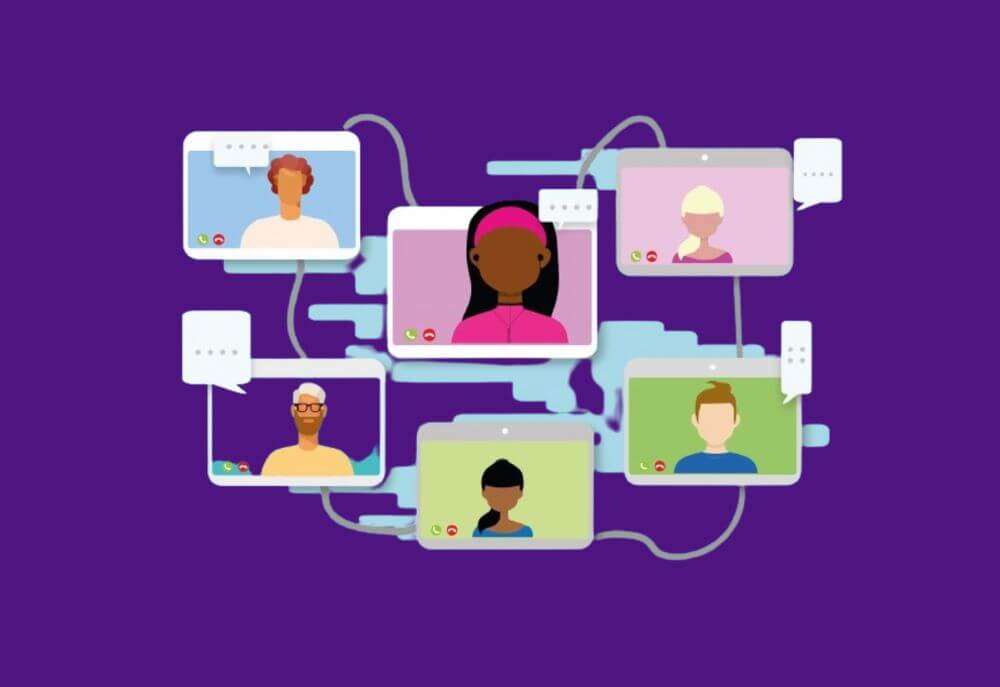Do you want to know how to make staff meetings better? If yes, this article is for you.
Staff meetings are like the backbone of a well-functioning team. They might seem routine, but they hold the key to better teamwork, smarter decisions, and more productivity.
Likely, your team members won’t care about or value your meetings if they’re awful. Teams that have been worn down, demoralized, or even alienated by unfocused meetings may fail to see opportunities and risks they otherwise would have seen.
However, if your meetings are brief, effective, and focused, they can start exciting and dynamic events that motivate the entire team to take action and make decisions.
Let’s explore what staff meetings are all about, what they should include, and how they can benefit your team.
What Is a Staff Meeting?
A staff meeting is when a group of employees in your company or organization gets together to discuss your work or project. Usually, the CEO, owner, or managers lead these meetings. They’re meant to help everyone share information, set goals, make decisions, and work better together.
They can occur in person or can be virtual meetings, depending on the organization’s preferences and needs.
What Should Be Included in a Staff Meeting?
What is the difference between good and bad meetings? A good meeting hinges on a well-thought-out agenda. Therefore, if you want to lead better meetings, start by creating an agenda.
Staff meeting agenda includes:
- Important Goals: Start by saying what you want to achieve in the meeting. This will help staff members know what to focus on.
- Meeting Notes: Bring up what was talked about in the last meetings. It keeps everyone informed and makes it easier to carry out previous decisions.
- Setting Goals: Decide what you hope to accomplish during this meeting. Everyone can stay on track if the goals are clear.
- Discussion Topics: The main body of the agenda lists the discussion topics in the order they will be addressed. Each topic is assigned a specific amount of time to ensure the meeting stays on track.
- Staff Meeting Ideas: If you want to be among good leaders, encourage team members to share their ideas and suggestions during these meetings.
- Upcoming Events or Projects: Talk about upcoming tasks, deadlines, and events at work. Success depends on preparation.
- Running Order: Make a schedule for the meeting—set times for each topic so the meeting doesn’t drag on forever.
What Happens During a Staff Meeting?
What happens during a meeting can vary depending on the organization’s culture and the specific goals of the meeting. The purpose of a staff meeting lies in active participation, discussion, problem-solving, decision-making, and collaboration. It is a forum for staff members to share information, update peers on ongoing projects, and articulate thoughts and concerns. Ultimately, successful meetings foster a sense of unity, ensuring that every team member feels heard and valued and contributes to the larger narrative.
What Is the Difference Between a Team Meeting and a Staff Meeting?
Team meetings and staff meetings serve distinct purposes and involve different groups of individuals within an organization. Here’s a breakdown of the key differences between the two:
Team Meeting:
Participants: Team meetings involve a specific group of individuals who are usually working together on a particular project or within a department. These participants share a common goal or project-related responsibilities.
Focus: The primary focus of a team gathers is on project-related matters, task coordination, and project progress. It is geared toward achieving the goals of the specific project or department.
Content: The content of a team meeting revolves around project updates, task assignments, problem-solving, and discussions specific to the team’s immediate objectives.
Frequency: Team meetings can be frequent and are often held as needed to address project-related issues, track progress, and make decisions relevant to the project’s success.
Leadership: Team meetings are usually led by the team leader or project manager responsible for the particular project or department.
Staff Meeting:
Participants: Staff meetings involve a broader group of participants, including representatives from different departments or teams within the organization. It brings together staff members from various areas of the company.
Focus: Staff meetings have a broader focus on organizational matters, company-wide updates, and general issues affecting the entire organization. They aim to strengthen overall teamwork and communication and to boost morale.
Content: The content of a staff meeting may encompass company-wide updates, policy changes, financial reports, HR matters, and discussions on improving workplace culture and employee morale.
Frequency: Staff meetings are typically held on a regular schedule, such as weekly, bi-weekly, or monthly, depending on the organization’s practices.
Leadership: Staff meetings are usually led by upper-level management or department heads, as they address broader organizational issues.
What Should Be the Purpose of a Staff Meeting?
The purpose of a staff meeting should encompass several important objectives that contribute to the overall success and cohesion of the organization.
Here are the key purposes:
- Communication: These meetings are a primary channel for sharing information, updates, and news within the organization. They help ensure that all team members are well-informed about important matters, fostering transparency.
- Collaboration: These meetings encourage collaboration and the exchange of ideas among team members. They provide a platform for brainstorming, problem-solving, and working together to achieve common goals.
- Decision-Making: These meetings facilitate collective decision-making, enabling team members to discuss and reach a consensus on important issues, projects, or policies.
- Goal Setting: They provide an opportunity to set, review, and adjust goals and objectives, ensuring the team remains aligned with the organization’s mission and vision.
- Feedback and Input: These meetings allow team members to provide feedback, share suggestions, and voice concerns. This fosters a culture of open communication and continuous improvement.
- Unity and Team Building: These meetings strengthen the unity among team members by promoting a feeling of belonging and shared purpose. They contribute to team building and the development of strong working relationships.
- Morale Boosting: These meetings can boost morale and motivation by recognizing achievements, celebrating milestones, and appreciating team members’ contributions.
- Policy and Procedure Updates: They serve as a platform for disseminating updates on company policies, procedures, and guidelines, ensuring all staff members are aware of any changes.
- Strategic Planning: They can include discussions on the organization’s long-term strategic plans and initiatives, ensuring all staff members understand and contribute to the company’s strategic direction.
- Culture and Values Reinforcement: They help reinforce the company’s culture and values, emphasizing the importance of ethical behavior, respect, and the organization’s core principles.
- Problem Identification and Resolution: These meetings are a valuable forum for identifying and addressing challenges, issues, or obstacles that may hinder the team’s progress.
- Improving Work Environment: They provide a space for discussions about enhancing the workplace environment, creating a more pleasant and productive atmosphere.
- Workforce Development: These meetings can include discussions about training, skill development, and opportunities for personal and professional growth.
- Empowerment: They empower team members by giving them a voice in shaping the organization’s future, making them feel more invested in their work.
In essence, the purpose of a staff meeting is to promote effective communication, collaboration, and decision-making while fostering a positive work environment and keeping the team aligned with the organization’s goals and values. Staff meetings can be a powerful tool for organizational success when conducted with these purposes in mind.
Who Should Lead a Staff Meeting?
Usually, the big bosses or managers lead staff meetings. They guide the discussion, plan the topics, and ensure the meeting stays on track.
How Do You Prepare for a Staff Meeting?
For a successful staff meeting, you’ve got to get ready. Start by making a clear plan with goals and a schedule. Share this plan with everyone ahead of time. If you’re meeting online, ensure the technology works so you can chat in real-time without any problems.
Key Features of Staff Meeting
Good staff meetings have:
- Better Communication: People talk openly and work together better.
- No Unproductive Meetings: They don’t waste time on things that don’t matter.
- A Better Workplace: They make the work environment friendlier and more enjoyable.
- Higher Morale: Everyone feels like they’re part of the team and valued.
- Meeting Goals: They get things done and move closer to their goals.
Improve your Staff Meetings with Cultup
In the end, staff meetings are like the glue that holds a team together. When done right, they can transform a group of people into a successful team. So, follow the best practices, set clear goals, and make your staff meetings work for you.
Ready to transform your staff meetings into productive, engaging sessions? Try Cultup today and experience seamless meeting organization. Create interactive agendas, engage your team with polls and Q&As, and ensure you never miss a beat with time-attached presentation slides. Start your journey to better staff meetings with Cultup now!



